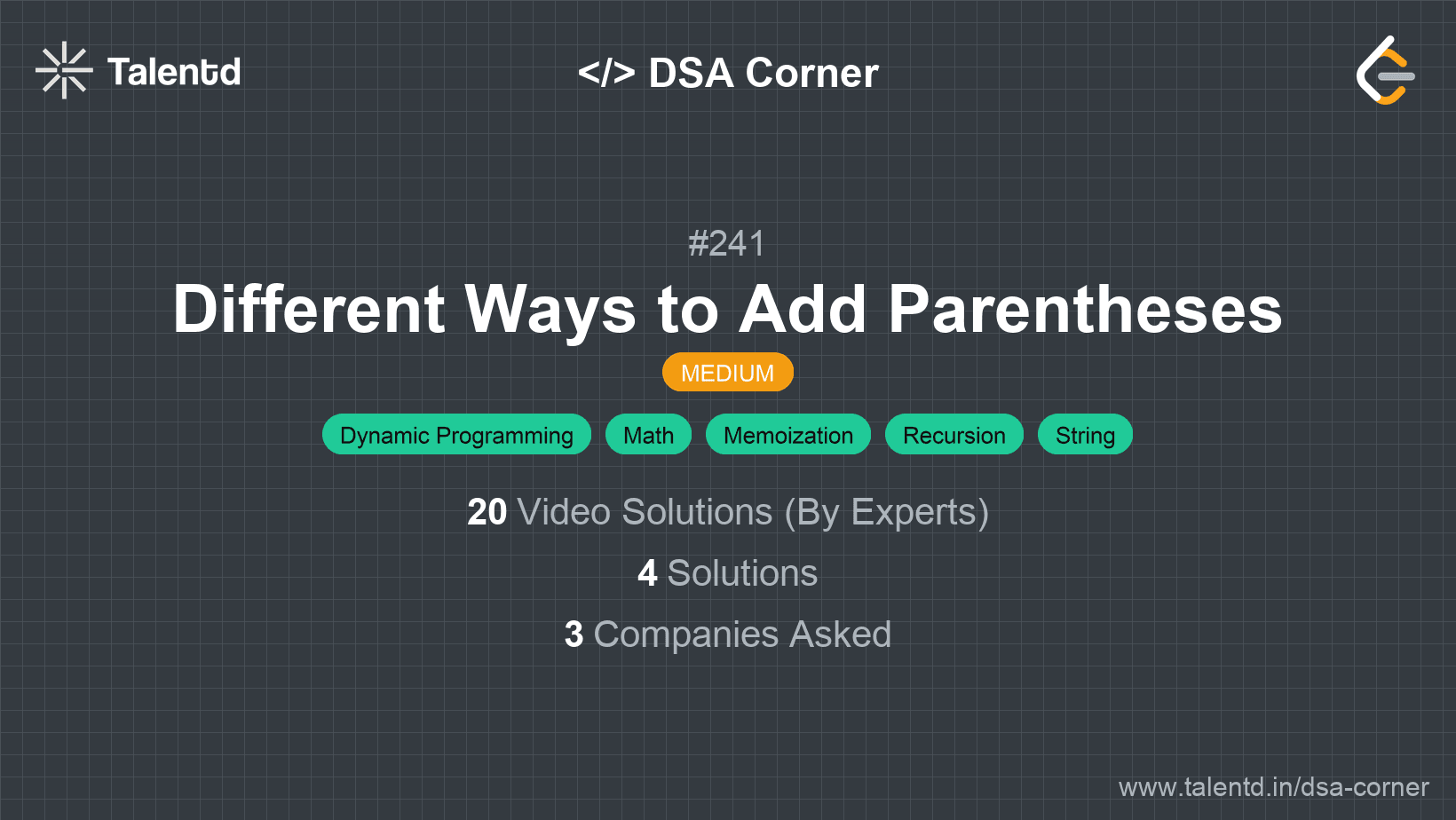
Sponsored
Sponsored
The problem can be approached by using recursion to divide the expression into sub-expressions at each operator, evaluating each possible combination. For each operator, compute the left and right sub-expressions separately, then combine their results based on the operator. This allows us to explore all possible ways to parenthesize the expression and evaluate it.
Time Complexity: O(2^n) - In the worst case, the algorithm evaluates every partition.
Space Complexity: O(2^n) - due to the recursion depth and storage of intermediate results.
1def diffWaysToCompute(expression):
2 if expression.isdigit():
3 return [int(expression)]
4
5 results = []
6 for i, char in enumerate(expression):
7 if char in "+-*":
8 left = diffWaysToCompute(expression[:i])
9 right = diffWaysToCompute(expression[i+1:])
10
11 for l in left:
12 for r in right:
13 if char == '+':
14 results.append(l + r)
15 elif char == '-':
16 results.append(l - r)
17 elif char == '*':
18 results.append(l * r)
19
20 return results
21
22# Example Usage
23print(diffWaysToCompute("2*3-4*5"))This Python solution uses recursion to break down the expression into all possible pairs of sub-expressions partitioned by operators. It recursively computes the result for each pair and combines them according to the operator. The function checks if the expression is a single number and returns it as a list; otherwise, it iterates through the expression characters, recursively calls itself for partitions, and calculates possible results.
To optimize the recursive approach, we can use memoization to cache the results of subproblems. This avoids redundant evaluations of the same sub-expressions, thereby optimizing the time complexity. We store results of sub-expressions in a hash map and reuse them when the same sub-expression is encountered again.
Time Complexity: O(n^3) - n^2 subproblems with evaluation cost per subproblem.
Space Complexity: O(n^2) - for storing results of subproblems in a memoization table.
1import java.util.*;
2
3
The Java version applies memoization by storing results of already computed sub-expressions in a HashMap. It checks for cached results before computing new ones, ensuring no duplicate calculations for the same expression parts. This optimization reduces the time complexity significantly compared to the naive recursive approach.